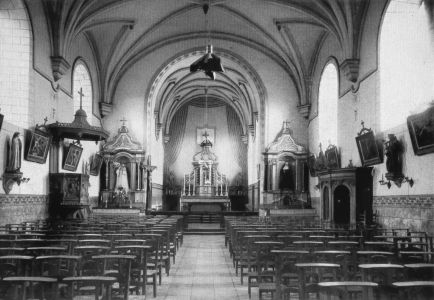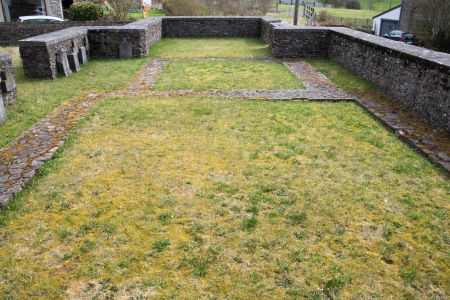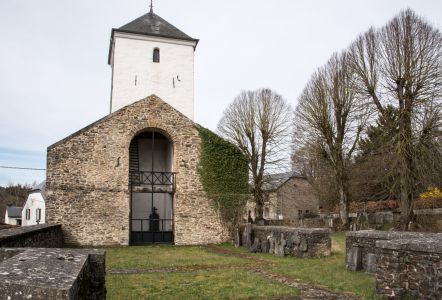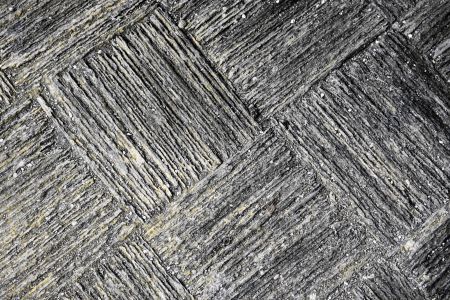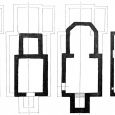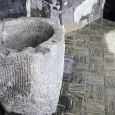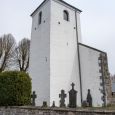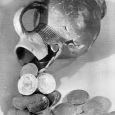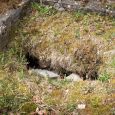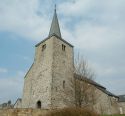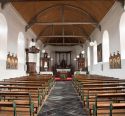Church | XI | Romanesque | Catholic Church

Map
Opening hours
Pernanently open.
Description
Dedicated to Saint Gertrude, this former chapel, located in the heart of old Tenneville, was one of the most distant possessions from Nivelles Abbey around 1059. Dependent on the parish church of Cens, it was only erected as a parish in 1586 following the Council of Trent.
Parish history did not develop until the end of the 16th century, when the forges of Le Noir Bras, Prelle and Sainte-Ode were established.
Following excavations carried out in 1957-1958, the remains of an ancient necropolis dating from the 8th to the 10th century were discovered there. Archaeological examination also revealed a succession of three buildings over the centuries. Nowadays, all that remains is the tower of the bell tower stretching up to the sky in the enclosure of the old cemetery where centuries-old tombstones still stand.Learn more about the tombstone of Lord Trimleston
Photos
Media
Remarkable elements
History of the church
The building was deconsecrated in June 1957 in favour of the new Tenneville church and was the subject of two very successful excavation campaigns in late 1957 and early 1958. These thorough excavations have brought to light more than a thousand years of local history. Since then, the town council, supported by "The Friends of the Old Church of St. Gertrude in Tenneville", has intervened to protect this heritage and in particular the tower, with a date of 1682. However, it was not until 1985 that the site was classified. This was followed by the demolition of the core, the nave and the sacristy in 1986, then the restoration of the tower in 1989 and its maintenance in 2012.
Baptismal fonts (Xth century)
The rock in which these baptismal font were made is arkose. These would be dated to the time of the primitive chapel. Arkose is a metamorphic rock derived from sandstone, formed in the Lower Devonian. This stone was used to grind the grain between the 1st and 6th centuries. At the end of the 12th century, one third of children do not exceed the age of 5 years and at least 10% die within a month of birth. An unbaptized dead child was reputed to go to limbo, a space different from paradise, where the soul wandered endlessly. Invented by Latin theologians of the Middle Ages, Limbo did not disappear from the catechism until 1992.
Tower (1682)
The simple mention of Tenneville in 1059 as one of the most distant possessions from Nivelles Abbey reveals the existence of a community and almost certainly an oratory even before that time. Following the fire in the original chapel around 1680, a new and slightly larger place of worship, to which a tower was added, was rebuilt on the site in 1682. Many years later, the church was threatened with ruin. A third building was therefore built between 1851 and 1855, although the tower was kept as a cost-saving measure. Apart from the renovation and consolidation of this tower in 1866, the church will then take on the appearance it still had in 1957
Tombstone of Lord Trimleston (1670-1692)
In the tower stands the headstone of an elite Irish officer who fell in action on 10 September 1692 during the Battle of Ortheuville. We are then in the middle of the war of the Augsburg League which lasted from 1688 to 1697. In the service of France and under the command of Marshal d'Harcourt, Matthias Barnewall, 10th Lord Trimleston, was then lieutenant. At just 22 years of age, he was a member of the prestigious King Jame's II Troops of Irish Horse Guards. Surprised by an enemy attack in which his regiment distinguished itself, he was unfortunately killed during the first cavalry charge. His sense of duty immortalized the epic of the "Wild Geese" (> further information).
Treasure house (17th century)
At the end of 1957 Odon Lambion (1934-2018) worked in a ditch at a depth of 87 cm from the tiled floor of the church, 2.6 m from the choir. The blade of his pickaxe touches, without seeing it, a terracotta jar standing upright in the ground. It breaks through the shock and a number of gold and silver coins from the 16th and 17th centuries fall on its feet: from the Principality of Monaco, Turkey, Ottomania, Carinthia (Austria), the city of Camps in Italy and even Colombia. The research of the jug revealed that this treasure was buried around 1675. Unfortunately it was stolen in 1998 in a safe that was forced by the burner!
Bell furnace
In a trench at the foot of the tower but in the nave, at a depth of 1.9 m, the excavations uncovered a 43 cm wide canal, the bottom of which is made of clay reddened by fire and bordered by two small low rubble walls, connected to the clay and heavily burnt. The mussel was also found a little further north, at a depth of 1.59 m. The bronze bell that was cast here had an inside diameter of 59 cm. The bell furnace was generally placed in a place where the bell could be placed without too many manoeuvres. This bell had to be hoisted up in the tower when it was built and then probably remelted in 1866 during the renovation work.




